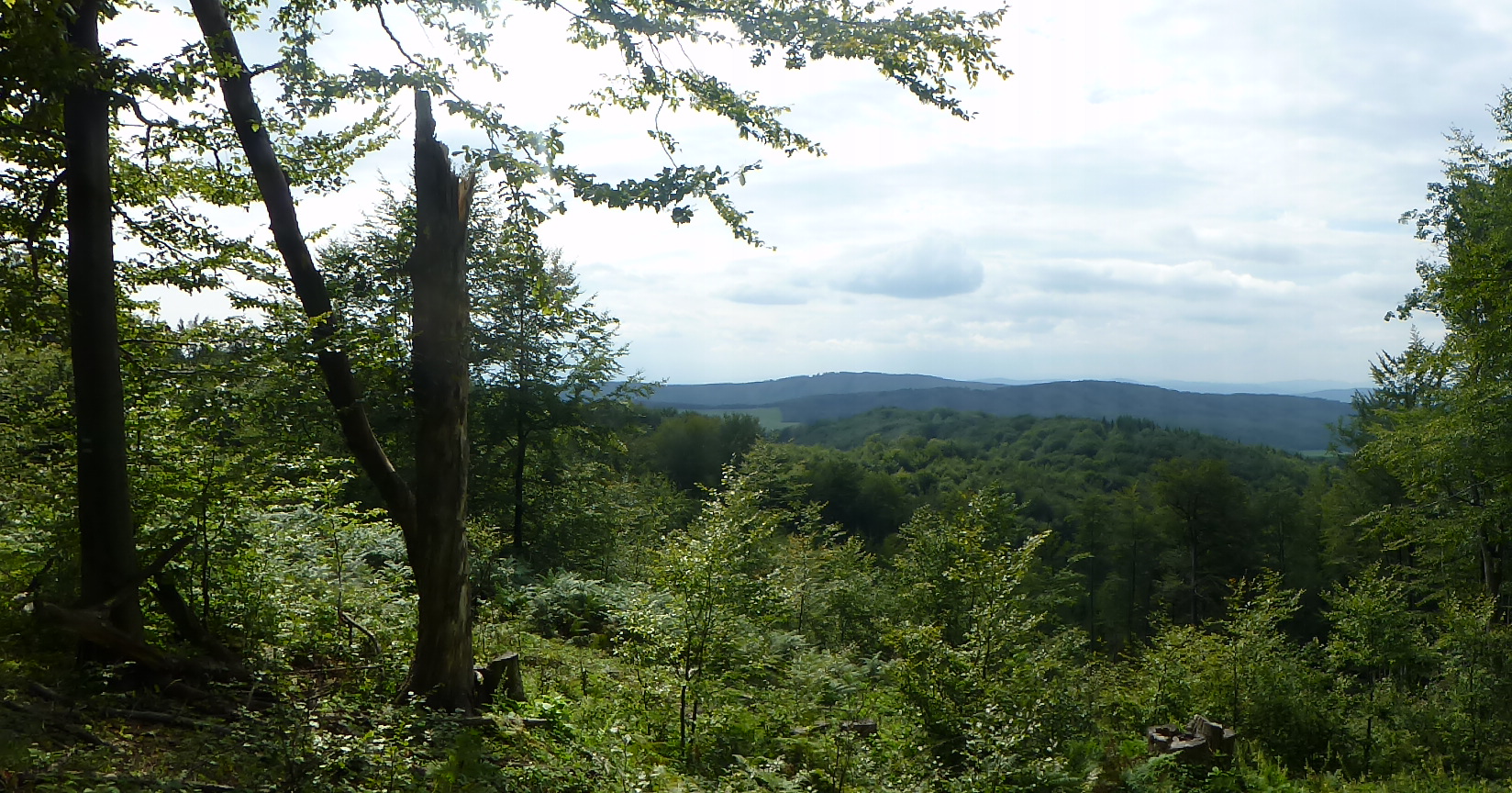Well. You’re an idiot. Again.
Surely I didn’t repeat Šumava.
You did. Idiot.
I lost the hiking map.
Sigh.
At least in Šumava, I was with seven people. At least in Šumava, I bought another map. At least in Šumava, I wasn’t at the most isolated point of the hike before realizing it.
The Best-Laid Plans of Mice and Men…
I hadn’t heard of the wooden churches of Slovakia before browsing an outdated Lonely Planet guide I found for 30 cents at a book sale. The relative remoteness and uniqueness intrigued me, so I planned to see them before I even left Ohio. On a Wednesday, I outlined a trip to eastern Slovakia two days later. Take the train from Brno to Bratislava, and transfer to one bound for Prešov. From Prešov, catch a bus to Svidník, then figure out how to get 15 km northeast to start the hike.
When the train arrived late in Bratislava, I missed my transfer and had to wait two hours for another train. As the train crossed Slovakia and it became clear the train was running 90-minutes late, I realized I had to spend the night in Prešov. A friend texted me the address of a cheap hotel, and a Slovak gave me directions on how to get there as she struggled to keep her two (adorable) children within arm’s reach.
Flirting with the receptionist at the hotel proved futile, and I made plans to catch the 7:20 bus to Svidník the next morning.
Svidník: Not Hideous, but Confusing
As the bus driver played his favorite tunes from an apparent catalog of Slovakian/Ukrainian folk songs and the woman behind me dug her knees into my back, I tried to sleep. That plan failed (like every other plan that weekend). Slovakia’s natural beauty is surprising. Playing second fiddle to Bohemia and Moravia, Slovakia gets derided as a backwater cousin with more pollution. In reality, it’s more dramatic and less populated; the rolling hills of Moravia become mountains. Fortresses and castles in various stages of disrepair mark the peaks.
My gut reaction to call Svidník “ugly” is wrong. Disfigured is more fitting. An industrial town with Stalinist apartment blocks and Soviet-era murals is tucked into the hills. It’s like a child made a collage from National Geographic and Pravda.
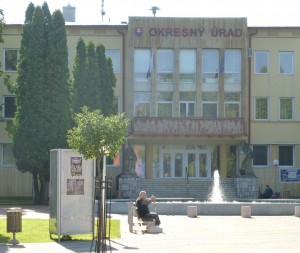


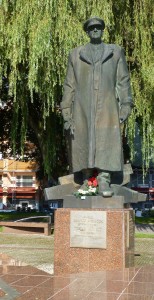
Svidník has a few museums: the Museum of Ukrainian-Rusyn Culture, a Military Museum focusing on the World War II battle for the Dukla Pass (20 km north of the city), and a skanzen that showcases various aspects of Rusyn culture and life. Unfortunately, I lacked the time to visit. Instead, I badgered the concierge at the Hotel Rubín for a taxi’s phone number. The driver, Josef, spoke little English, and I even less Slovak, but we worked it out and met at the bus station.
I planned to hike from Krajná Pol’ana to Bodružal, onward to Príkra, over to Mirol’a, and end at Krajné Čierno. Explaining to Josef, he emphatically rejected the plan and explained an alternative. So. Starting from Krajné Čierno, I’d pass through Hunkovce to Krajná Pol’ana, then to Bodružal and Príkra, ending at Mirol’a. There, I would call him for a ride back to Svidník. Easy.
High Hopes and Wooden Buildings
Arriving at Krajné Čierno, I saw another church was being built beside the original. However, it wasn’t the wooden church in Krajné Čierno. Not realizing my mistake, I carried on toward Hunkovce. Like a schmuck. Throughout the area, the churches have a sign with contact information so visitors can tour them (and pay a small admission fee). Not being on the itinerary, I admired it and left. Most churches around Svidník are Greek Catholic (Uniate): they retain some traditions and practices of Eastern Orthodox Christianity, but remain in communion with Rome. Upon reaching Krajná Pol’ana, a marked trail leads through Bodružal and Príkra to Mirol’a. The church in Bodružal is profound, and was recognized by Unesco in 2008. Built in 1658, the interior is stunning. The caretaker requests no pictures inside, but a Google search will show the request isn’t always respected. The atmosphere provokes a certain amount of respect for the congregation’s devotion and sacrifice for such a construction. After half an hour, I departed for Príkra. Arriving at the church, however, the caretaker didn’t answer my calls. I settled for a few pictures and left.
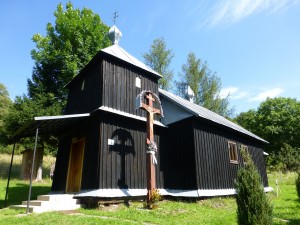
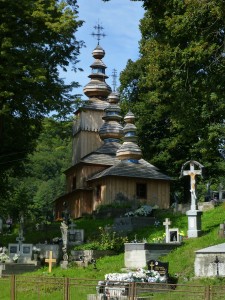


Until Príkra, the trail followed the roads linking the towns. To reach Mirol’a, though, the trail went up a mountain through meadows and forests. Perfect, right?
Getting Lost
The beauty and solitude along the trail was wonderful. Peaceful, relaxing … just as I imagined a hike through eastern Slovakia.

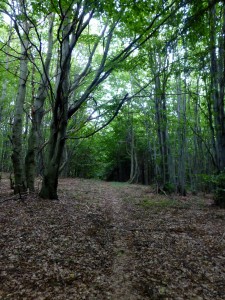

Until I start downhill.
I pause.
This might be a clearing, not a path.
Congratulating myself on such foresight, I open my bag to check the map. And it’s not there. As I climbed, it must’ve fallen out as the bag bounced against me.
Well.
At least the path is marked. I can follow that to Mirol’a.
Until the trail blazes disappeared after 15 minutes. Then, I begin a combination of rationalization/self-deception, reassurance, and cosmic bargaining.
You have hours until sunset. Don’t worry.
You head downhill at some point. There aren’t bears here.*
For the next 45 minutes, I pick a way through what looks like a path, passing intermittent blazes which weren’t the ones I should’ve followed, until I find a decrepit logging road. Or what I assumed was one, as nothing else would make sense.
And I emerge into a field, a road in the distance.
Success!

The road led into Pstriná, but I had no idea where that was. Gettinga weak phone signal, I called Josef to rescue drive me back to Svidník. I overshot Mirol’a by a kilometer or two, as it turned out. My sense of direction was fine, but my skill for gauging distance was lacking.
Returning to Svidník, we made small talk as best we could. Age, where I’m from, whether I’m married/have a kid.
“Ne, ne,” I said.
“Ah, svobody,” he said, pointing to his wedding ring with a tinge of dismay in his voice.
Yes, I still had freedom.
Returning to Svidník, Josef helped me figure out when the bus to Prešov left. Staying in Prešov for the night before catching a 5:30 train the next morning, I decided I’d buy two maps for the next hike.
*Probably true, but too close to their range to offer comfort.
